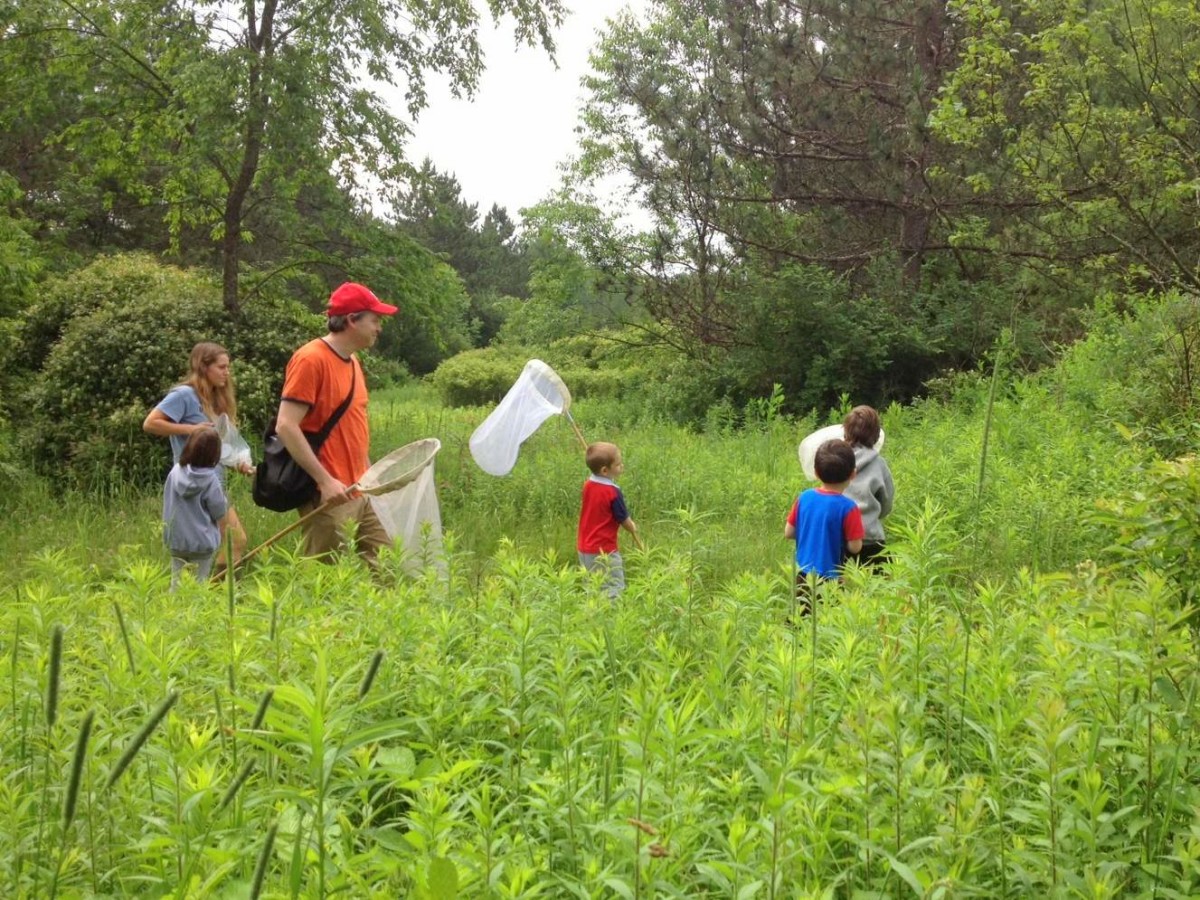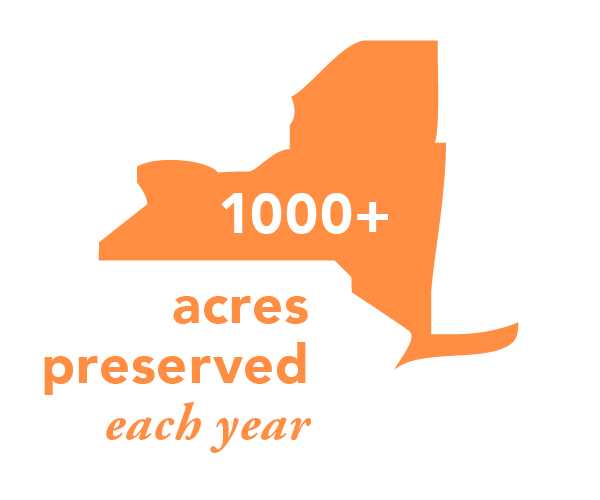Personal stories bring to life benefits of land conservation: jobs, health, and resilience amid climate change.
ALBANY — Community-based conservation groups championing the benefits of open space, farmland conservation and parks today released a compelling publication detailing the broad benefits that conserved land provides in New York State. “Land Stories: Creating Jobs, Building Healthier, More Resilient Communities” profiles 13 conservation initiatives across the state and focuses on how state investments in these projects positively impact the economy, quality of life and public safety in the face of climate change.
The report highlights the astonishing diversity of New York’s natural resources and gives voice to countless residents who benefit from conserved land—whether from clean drinking water, fresh and healthy food from upstate farms, or access to outdoor recreation. In one profile, New York City resident Charlotte Lily Gaspard describes how community gardens transform city neighborhoods: “In such a crowded and busy place, it is even more essential to have green spaces to stimulate a sense of local community and a connection to nature and each other. The gardens provide a place to slow down, to feel safe and nurtured, to meet and connect with neighbors, and remember the joys of doing our part to make the community thrive and grow. In these gardens, urban youth can learn about the joys of gardening, and understand that food not only comes from a factory or a supermarket, but also grows from the earth.”
State Open Space Plan and EPF critical tools
All of the projects described in the report were enabled through Gov. Andrew Cuomo’s Open Space Conservation Plan and Environmental Protection Fund (EPF), which has received praise from the environmental community for its vision and recognition of the importance of creating resilient communities in the face of climate change and securing farms that provide fresh, local food to the communities. As the report emphasizes, protection of these irreplaceable treasures resulted from crucial partnerships between state and local governments, property owners and land trusts. Projects profiled in Land Stories range from Long Island, New York City, the Hudson Valley, the Capital District, the Adirondack Park, North Country, the Alleghenies and Western New York.
The publication is the second of its kind released by the groups. The original “Land Stories: What We Give is Returned in Abundance” was published in 2010. Both reports are available at www.scenichudson.org/ourwork/publicpolicy/resourcecenter
Organizations associated with publication of the report provided the following comments:
“It’s more important than ever that the state makes a serious commitment to preserving open space and farmland. As agencies finalize the Open Space Conservation Plan, land trusts are striving to fulfill their role in securing the supply of fresh, local food for New York City and Hudson Valley residents. With adequate state funding, this private-public partnership also can help valley communities prepare for flooding and sea level rise by creating resilient, sustainable shorelines. Land Stories offers the Legislature a view to how diverse people statewide are benefiting from conserved lands so legislators can make informed decisions during the budget process and allow these benefits to continue,” said Steve Rosenberg, Senior Vice President of Scenic Hudson and Executive Director of The Scenic Hudson Land Trust.
“Land Stories is a splendid example of the role of land conservation in supporting local economies, providing vital jobs that support outdoor recreation, fishing, hiking and biking for millions of New Yorkers. As the Trust for Public Land’s Return on Investment Study has shown, for every $1 invested through the Environmental Protection Fund in land and water protection, $7 in economic benefits through natural goods and services is returned to the state of New York. The enormity of the damage caused by Hurricanes Irene and Sandy—and the likelihood of more extreme weather in the future—has underscored the importance of the EPF and land protection in critical areas,” said Marc Matsil, New York State Director for the Trust for Public Land.
“Land conservation projects around the state, including those highlighted in Land Stories, demonstrate the effectiveness and compelling public benefit of New York’s investment in open space, from farmland and community gardens to parks, trails and municipal watersheds. A robust Environmental Protection Fund will further leverage a network of highly capable land trusts and partners who are dedicated to assisting families and local communities across the state. This is the time for New York to step up and make more stories like these possible,” said Ethan Winter, New York Conservation Manager for the Land Trust Alliance.
“Funding for the permanent conservation of farmland provided through the Environmental Protection Fund enables farmers from Long Island to Buffalo to make transformative investments in their farm businesses and facilitate the transfer of family farms from one generation to the next. Farmers are increasingly looking to funding in exchange for development rights as a means of setting the stage for the future–growing and diversifying their family businesses while permanently protecting their land for future generations of New York farmers,” said David Haight, New York State Director for American Farmland Trust
“The Land Stories report is a wonderful reminder of the meaningful impacts the EPF and effective land conservation have on the lives of New Yorkers in every walk of life. From family farmers and community gardeners to families who visit our parks and communities that benefit from the clean water maintained through effective conservation, all New Yorkers benefit from protecting our land. We urge an EPF funding commitment that implements Governor Cuomo’s Open Space Plan,” said Christopher J. (Kim) Elliman, President and Chief Executive Officer for the Open Space Institute.
“Land conservation ensures that millions of New Yorkers have clean and plentiful drinking water, reduces risk to communities from extreme weather, and provides healthy, local food. Conserving open space has proven economic benefits and is a wise use of public funds. We are hopeful that in the next state budget, investments in land conservation will be increased so that these benefits can be realized throughout the State,” said Jessica Ottney Mahar, Director of Government Relations for The Nature Conservancy in New York
“Land Stories clearly demonstrate the positive impact the Environmental Protection Fund is having around the state. These investments are vital to our collective effort to provide clean water, strengthen our agricultural sector, and create new opportunities for outdoor recreation and tourism. All New Yorkers benefit from these programs,” said Andy Zepp, Executive Director for the Finger Lakes Land Trust.


